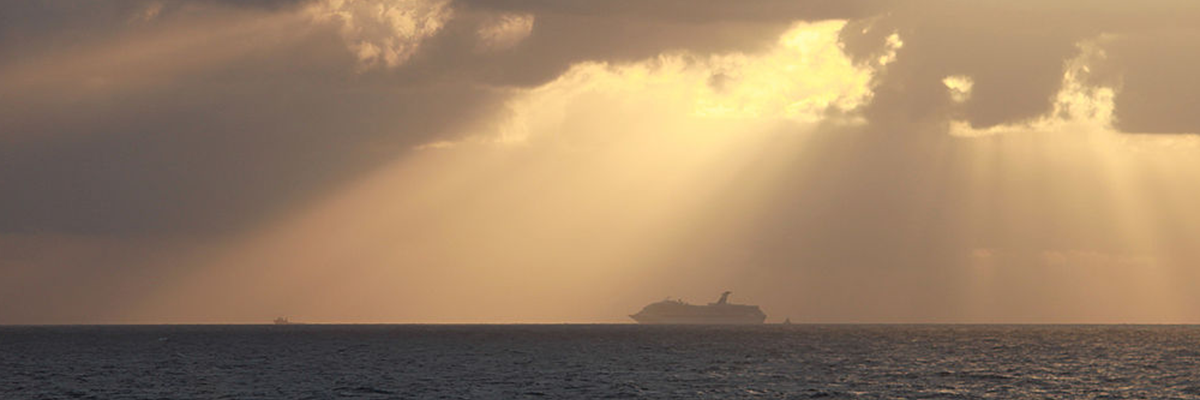Oceanography Study Says Carbon Dioxide Levels Rising In Gulf Of Mexico
Texas A&M Oceanography team finds Gulf waters becoming harmful to marine life, commercial fishing could be threatened.
Jul 28, 2020

The amount of carbon dioxide in the atmosphere has increased 40 percent since the Industrial Revolution (1760 to 1840) because of human activities. The ocean, including the Gulf of Mexico, has absorbed at least 25 percent of this carbon dioxide, which will almost certainly continue to increase, resulting in harmful conditions to marine life, according to a study co-authored by a team of Texas A&M University Department of Oceanography professors.
Texas A&M oceanographers Dr. Katie Shamberger, Dr. Steven DiMarco, Dr. Niall Slowey, Dr. Robert Hetland, Dr. Kristen Thyng; former Texas A&M Ph.D. student and lead author of the study, Dr. Andrea Kealoha, now at the University of Hawaii-Maui College; and colleagues from NOAA have had their work published in the current issue of Scientific Reports.
Carbon dioxide is increasing in the open ocean Gulf, the study showed, at rates similar to what has been measured in the open ocean Atlantic and Pacific due to human carbon dioxide emissions.
The data used in the study are publicly available from The Surface Ocean CO2 Atlas (SOCAT) database, much of which were provided by the NOAA Atlantic Oceanographic and Meteorological Laboratory (AOML) Ocean Carbon Group.
The team also found that carbon dioxide is increasing faster in coastal (on the continental shelf) Gulf of Mexico waters compared to open ocean waters, which is consistent with other studies showing enhanced acidification in coastal waters compared to the open ocean.
“This is very concerning because several economically important coastal ecosystems, including coral reefs, shellfish and others, are sensitive to acidification, which again, is occurring faster in coastal waters than open ocean waters in the Gulf,” Shamberger said.
“Carbon dioxide levels are increasing in the atmosphere from burning fossil fuels for energy and from deforestation. The ocean absorbs some of this human-produced, also called anthropogenic, carbon dioxide. When carbon dioxide dissolves in seawater, it leads to a process called ocean acidification. Ocean acidification is harmful to many marine organisms, from phytoplankton to fish, and makes it more difficult for shellfish and corals to make the shells and skeletons they need to survive.”
The continued acidification could be especially concerning to commercial fishing in the Gulf, which is approaching the $1 billion mark.
Shamberger said carbon dioxide levels were fairly stable and did not increase in the central Gulf of Mexico, both in coastal and open ocean surface waters, where excess nutrients are delivered by the Mississippi and Atchafalaya rivers.
This could be because this area of the Gulf of Mexico is highly variable as a result of constantly changing river inputs, or because the effects of increasing nutrients potentially mask any increase in carbon dioxide, the study said.
Shamberger added that the “the overall big picture here is that surface water carbon dioxide levels are indeed increasing in the Gulf of Mexico (except in the central Gulf) and human activities are contributing to this acidification. Also, coastal acidification is occurring faster than open ocean acidification, which is especially troubling for coastal coral reef and shellfish ecosystems that support many important fisheries species.”
It is likely that coastal and ocean acidification in the Gulf of Mexico will only worsen as human carbon dioxide emissions continue to increase, Shamberger said.
“A serious challenge in studying ocean acidification in the Gulf of Mexico is that there is no long-term time series station where carbon dioxide levels and seawater chemistry have been measured repeatedly over decades in the same location,” she said. “This has led to uncertainty about whether ocean acidification is important for Gulf of Mexico ecosystems. Our work shows that ocean acidification, and especially coastal acidification, are serious concerns for the Gulf of Mexico.”
“This is the first study to provide a Gulf-wide, long-term assessment of surface water carbon dioxide trends in the region, and it will be important to update this analysis in order to monitor the health of Gulf of Mexico coastal and open ocean ecosystems,” Kealoha said.
By Keith Randall, Texas A&M University Division of Marketing & Communications
